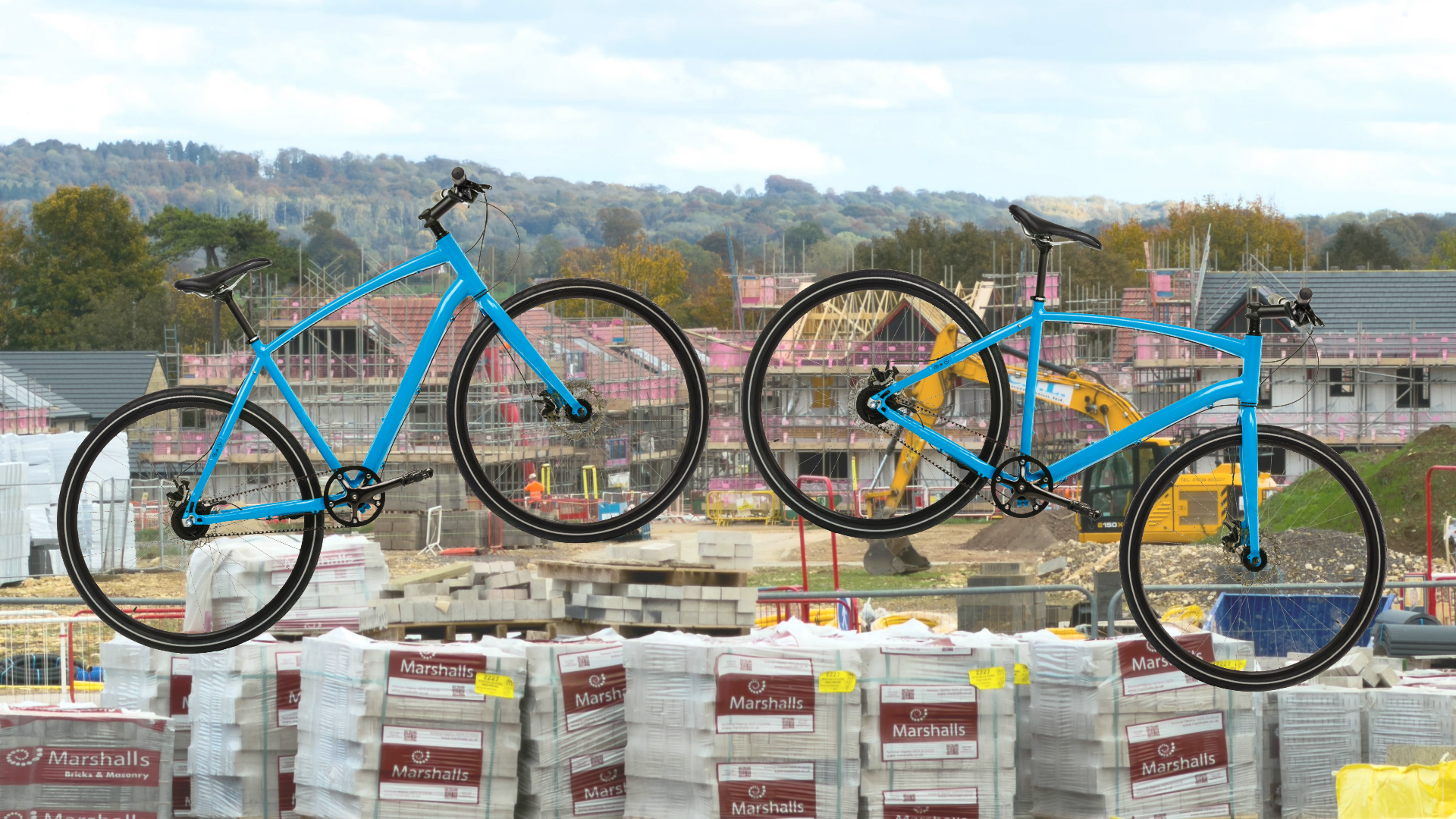Learning from the Netherlands - what could Britain's cycling future look like?
As the Netherlands scoops up the world's cycling kudos again, Meg wonders what alternate future could exist across the North Sea


I exit my house and the front garden splays ahead of me, ribbons of roads stretching into town. I'm on my bike and free-wheeling down the hill to the shops to get a coffee, grab some bits, run some errands. Everything is so near, so interconnected that the need for a car is low - everyone is on bikes, or out for a lunchtime stroll.
I’m daydreaming about town planning (it's a surprise to me, too) after a morning spent browsing the list of the 30 most bicycle friendly cities in the world. No UK cities were mentioned in that golden roster, and it’s got me wondering about possible, cycle-centric futures during the mid-afternoon slump.

From the Welsh-English borderlands, Meg's first taste of cycling was downhill - she's now learning to love the up, and swapping her full-sus for gravel (for the most part!). She is slowly embarking on a road riding journey.
My utopian vision has been built in part by last month's announcement that the Netherlands would be investing €1 billion in cycling infrastructure, designed to connect more than 200,000 new homes nationwide. I never thought town planning would be my bag – until now.
“You can’t just build a neighbourhood and then figure out how people will get to and from it,” Chris Bruntlett, International Relations Manager at the Dutch Cycling Embassy told Zag Daily. “We have to develop the housing plans and collaborate with the transport sector at the same time. This is something the Netherlands does remarkably well.”
My daydream changes shape. Gone is the hill, the fence-posts that mark this place as British - worn out roadsides are replaced by smooth concrete and those funny ergonomic European lampposts. The Netherlands has long been a pioneer of bicycle-centric cities. This year, Utrecht was declared the most bike-friendly city in the world, with Amsterdam snapping at its heels. But it’s approach to planning can teach us a lot here in the UK, too.
“The bike, train and car are three ways we can access opportunity. But in the Netherlands, there’s an understanding that not everybody can afford a car and not everybody wants to use a car,” Bruntlett said.
British advocacy organisation, Transport for New Homes found that rural housing developments are leading to car-dependent estates detached from major urban areas and public transport links.
The latest race content, interviews, features, reviews and expert buying guides, direct to your inbox!
In my small hometown in North Shropshire, eighty new builds have shot up almost overnight: a parade of near-identical red-brick bores on the fringes of the town. To its north is a roaring A-road, directly ahead is the industrial estate, itself slowly hooking up with a town centre that is outgrowing itself.
If one of those soon-to-be homeowners wanted to head into town, their chosen mode of transport for that three to five minute journey would probably be by car. Twenty minutes on foot, or ten by bike, but the pavement doesn’t hook up to the cul-de-sac, and the pot-hole dappled industrial road isn’t the most enticing for the town commute.
It’s a shame. There is no doubt that we need more houses; the government has estimated that 300,000 homes are needed per year, due to the combined impact of longer-lifespans, a growing population and shrinking household sizes. But surely we can build homes that encourage community, interconnectedness - and a culture of cycling.
The UK-based Better Planning Coalition encourage the uptake of the 20-minute neighbourhood, where food shops, schools, public transport and healthcare facilities can be reached within a short walk or cycle. They also believe that when planning new developments, a maximum number of car parking spaces and a minimum number of bike storage spaces should be introduced. In Utrecht, there are more than 100,000 bike storage spaces, and nearly one-third of all trips made by its residents are taken by bike.
It is happening here, too, though on a more isolated scale. At Waterbeach in Cambridgeshire, a 716-acre development is being built with a "cycle-first" approach. Bike sheds are being built near the entrances to the houses, and cars are only permitted limited access in the development's winding streets. There will be walking groups, monthly cycle repair workshops and bike hire programmes rolled out once residents are settled, too.
“There was an opportunity to design the interior of Waterbeach in a different way, to continue that cycle-first approach from doorstep through to workplace,” Rebecca Britton, a spokesperson for Waterbeach developers Urban&Civic told Bloomberg CityLab. “We had a chance to do something that was a little bit different, and really try and make sure those cycle links were in from the beginning.”
The Waterbeach development is an encouraging step forward. Its uptake could be attributed to its proximity to England's cycling capital, but it shows that these kinds of developments are viable - and popular. As the urgency for more houses - and more affordable homes - grows, we need to be thinking about what it is like to live in the communities these developers are constructing, and cycling should be at the heart of them.
However, the road ahead is not straightforward. The 15-minute city (a precursor to the 20 minute city) seems to have fallen out of favour in the UK, amid claims that they could lead to developments that feel like "open-air prisons". Oxford City Council removed the use of the term from its local plan, citing that the concept had become "too toxic and incendiary." And this is all to a backdrop of diminishing investment in active travel in England. And yet, people are cycling more than ever - according to data from Transport for London, journeys taken by bicycle have risen by 43% in the last year.
I'm back, staring out of my window onto the potholed streets of my London road, and dreaming about something new - dedicated cycle lanes, families whizzing by carted along in electric cargo bikes, secure bike parking outside shops and cafes, the ability to be entirely present after leaving a bike chained up outside.
The vision isn't as distant as I once thought it was - other cities are doing it, now. There is the demand for a future like this, but will there be the investment to make it a reality?
In my daydream, I slip effortlessly into a tree-flanked bike path, pedals turning, a light breeze moving through my hair, my clothes, the branches around me, as I close the final few kilometres before home.

Meg is a news writer for Cycling Weekly. In her time around cycling, Meg is a podcast producer and lover of anything that gets her outside, and moving.
From the Welsh-English borderlands, Meg's first taste of cycling was downhill - she's now learning to love the up, and swapping her full-sus for gravel (for the most part!).
You must confirm your public display name before commenting
Please logout and then login again, you will then be prompted to enter your display name.